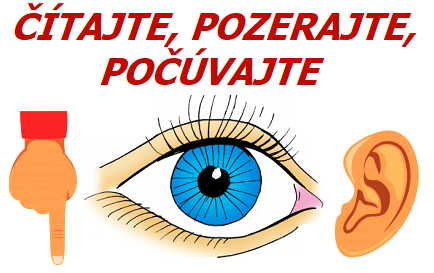24 Krajina, ktorej jazyk sa učím - AUSTRALIA, NEW ZEALAND AND CANADA :)
Vytvorené: 18. 10. 2014 Tlačiť
a) Australia
Australia is the smallest continent in the world. It is also the 6th largest country in the world.
There are over 20 million people living in Australia. Australia is divided into six states and two territories. The capital city is Canberra, which is in the Australian Capital Territory. The main cities in Australia are: Sydney, Melbourne, Perth, Brisbane, Darwin, Adelaide and Hobart.
Australia is an island with most of its population living around its coastline. The coastline has many beaches and reefs, such as the Great Barrier Reef, Bondi Beach and Surfers Paradise. The Great Barrier Reef in Eastern Australia is the biggest coral reef in the world. The centre of Australia is mostly desert with very little water. The famous Ayres Rock or Uluru is found here and is a popular tourist attraction.
The Australian Alpsare on the south-east side of Australia. The highest point on the Australian mainland is Mount Kosciuszko. The mainland and Tasmania are surrounded by many thousands of small islands and numerous larger ones.
In the North of Australia you can find rainforests and warmer weather as it is close to the tropics. The Daintree Rainforest is famous for its beauty and hiking trails.
The largest rivers are The Murray and the Darling. There are 3 big lakes here: Lake Eyre, Lake Torrens and Lake Gairdner.
As a result of the remote location of Australia, there are many animal species that occur here and nowhere else in the world, such as the platypus, kangaroo, echidna, and koala. Australia has created 516 national parks to protect its unique plants and animals.
Australia is considered to be one of the driest continents on earth. Climate varies because of the size of the continent. Climatic zones range from tropical rainforests, deserts and cool temperature forests to snow covered mountains.
Australia is one of the world's most ethnically diverse nations. Nearly a quarter of the people who live in Australia were born in other countries.
In Australia, the main language is Englishand the official currency is the Australian dollar.
Aboriginal people arrived in Australia about 50,000 years ago. Dutch explorers first landed in Australia in 1606, and the British began to settle there in 1788. Prisoners were sent to Australia from Britain to be used as a convict colony. Between 1851 and 1852, goldfieldswere discovered in Victoria and New South Wales. A rush to find riches brought thousands of new immigrants. In 1901, the Constitution of the Commonwealth of Australia was started. The parliament was established as a federation of six states and two territories.
Australia is an important exporter of agricultural goods like wool, wheat, beef, fruit, and wine. The country is also rich in minerals and metals and is the world's fourth largest producer of gold.
b) New Zealand
New Zealand is a remote, mountainous group of islands in the south eastern Pacific Ocean. The two main islands, North and South Islands, are separated by the Cook Strait. Australia, its nearest neighbour, is 1600 km away.
The South Island is home to the highest mountain peak in New Zealand, Mount Cook, which is 3754 meters high and it is called "Cloud Piercer" by the Maori people.
New Zealand has more than 50 volcanoes, some of which are still active today. The biggest volcano in New Zealand is also its largest lake called Lake Taupo. The Waikato River in the North Island is the longest New Zealand river. The longest navigable river is the Whanganui.
The first people to settle in New Zealand were the Maoris. They named it Aotearoa meaning „land of the long white cloud“. Much later, Dutch sailor Abel Tasman discovered it but left after being attacked by Maoris. Later, the British with agreement with the Maoris made it a British colony. Today, New Zealand is an independent country. Wellington is the capital city. New Zealand's largest cities are Auckland and Wellington in the North Island, Christchurch and Dunedin in the South Island.
New Zealand became the first country to give women the right to vote.
The country’s unique bird species are very impressive. New Zealand’s national bird is a flightless bird called Kiwi which is now endangered. New Zealanders are sometimes fondly referred to as kiwis. New Zealand’s native birds are all flightless, including the kakapos parrot, weka and the takahe.
Officially language is English, but some people still speak Maori.The Maori culture is widely respected by New Zealanders.
Tourism is the main industry in New Zealand. The main exports are lamb, butter, kiwifruit, and wine.
c) Canada
Canada is the second largest country in the world. The country is divided into 14 provinces. The state of Nunavut in Northern Canada was just build for the Inuit population. The highest mountain of Canada, Mount Logan is situated in the Canadian Cordillera. 5 rivers, the St. Lawrence River, the Mackenzie River, the Yukon, the Fraser and the Nelson river, are among the world´s largest 40. Lake Superior, Lake Huron, both shared with the USA, the Great Bear and the Great Slave belong to the 11 biggest lakes in the world.
Canada's three biggest cities are Toronto, Montreal and Vancouver. 8% of Canada’s land area is farmland and more than 30% of Canada is forest. The forest between Newfoundland and the Yukon is one of the world´s biggest. More northern areas are occupied by tundra and the arctic islands are covered by permanent ice caps. Some characteristic animals are the moose, the beavers, and the Canada lynx.
Canada’s population consists of two main and several smaller national groups. About 25 % are British and 25 % are French. The remaining 50% are mainly German, Ukrainian, Italian, Chinese, American Indian and Inuit, the native Canadian peoples. English and French are principally spoken languages. Ottawa is the capital city which is located in the province on Ontario. Canada has a relatively small population of 30 million.Canada is a federal state with a parliamentary political system.
The first Europeans to colonize the territory were the Portuguese in the 15th century. They were replaced by the French who established a colony up to the 18th century. From the 18th century, control moved to the British. In 1812, the British colonies in Canada fought a war against the USA. In 1867, the country became more independent when it became a dominion of the United Kingdom. In 1982 through the Canada Act, Canada became formally separated from the United Kingdom.
Canada is rich in raw materials, such as uranium, gold, zinc, silver, nickel. Mining industry is of great importance. Canada is a great exporter of wood and wood products. The country also belongs to the countries leading in agriculture. The main agricultural product iswheat. Maple syrup is a typical Canadian product.
![]()
· Simulácie z fyziky· O Slovensku po slovensky· Slovenské kroje· Kurz národopisu· Diela maliarov· Kontrolné otázky, Domáce úlohy, E-testy - Priemysel· Odborné obrázkové slovníky· Poradňa žiadaného učiteľa· Rýchlokurz Angličtiny. Rozprávky (v mp3)· PREHĽADY (PRIBUDLO, ČO JE NOVÉ?)Seriály:· História sveta (1÷6)· História Slovenska (1÷5)· História módy (1÷5).
Členstvo na portáli
Poznámka pre autora
Copyright © 2013-2025 Wesline, s.r.o. Všetky práva vyhradené. Mapa stránky ako tabuľka | Kurzy | Prehľady |






